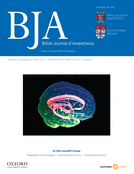
Arthroplasty
Ferric carboxymaltose vs oral ferrous glycine sulphate for postoperative anaemia after TKA
This report has been verified
by one or more authors of the
original publication.
Br J Anaesth. 2014 Sep;113(3):402-9.
122 adult patients with anaemia, iron deficiency, or both following total knee arthroplasty were randomly allocated to receive intravenous ferric carboxymaltose (FCM) or oral ferrous glycine sulphate (FS), with the purpose of comparing changes in hemoglobin (Hb) levels from postoperative day 4 to 30. Patients who received intravenous FCM experienced significantly greater changes in hemoglobin level and more frequent correction of anemia than FS.
Unlock the full article
Get unlimited access to OrthoEvidence with a free trial
Start TrialCritical appraisals of the latest, high-impact randomized controlled trials and systematic reviews in orthopaedics
Access to OrthoEvidence podcast content, including collaborations with the Journal of Bone and Joint Surgery, interviews with internationally recognized surgeons, and roundtable discussions on orthopaedic news and topics
Subscription to The Pulse, a twice-weekly evidence-based newsletter designed to help you make better clinical decisions
Exclusive access to original content articles, including in-house systematic reviews, and articles on health research methods and hot orthopaedic topics
Or continue reading this full article
Register Now

Subscribe to "The Pulse"
Evidence-Based Orthopaedics direct to your inbox.





































